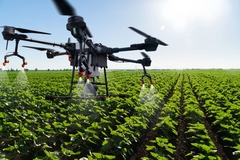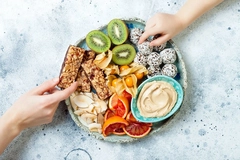Givaudan tips “mindful drinking” to be next big industry movement as alcohol reduction trend takes hold
05 Oct 2021 --- Givaudan has unveiled its latest research on “mindful drinking,” offering manufacturers critical insights into what consumers are looking for in low- and no-alcohol drinks and enabling them to create more appealing experiences. Speaking exclusively to FoodIngredientsFirst, Igor Parshin, the company’s regional category manager for beverages, explains how the alcohol-free movement can be compared to plant protein’s popularity, with the Swiss flavor house driving change that could be “a win for both consumers and industry.”
“We’re excited about the changes that the industry is seeing right now. This major shift is similar to the plant protein movement when all of a sudden a very niche market expanded into something spectacular,” he says.

 According to Igor Parshin (pictured), consumers in Europe demand more choice and innovation in low- and no- alcohol drinks.Parshin and his team decided to invest in an extensive piece of research across Europe. “The ‘mindful drinking’ concept has been a key initiative and a big priority for us,” he recalls, noting how the reduction of alcohol is a crucial trend within beverages.
According to Igor Parshin (pictured), consumers in Europe demand more choice and innovation in low- and no- alcohol drinks.Parshin and his team decided to invest in an extensive piece of research across Europe. “The ‘mindful drinking’ concept has been a key initiative and a big priority for us,” he recalls, noting how the reduction of alcohol is a crucial trend within beverages.
“Initially, we wanted to understand what is driving this demand and how we can help these consumers navigate this new and emerging space. These insights will allow us to provide solutions to create better drinking experiences for consumers.”
According to the research, 60% of alcohol drinkers in Europe are reducing their consumption while seeking great tasting low- and no-alcohol alternatives to enjoy during a wide range of occasions.
The key drivers behind this “mindful drinking” trend include improving general well-being (38%), saving money (33%) and improving physical fitness (31%). Eight are based on longevity or feeling good of the top 10 motivations for choosing low- and no-alcohol drinks.
Implications of COVID-19
Commenting on whether the pandemic has shaped these trends, Parshin believes its existence has “certainly helped the mindful consumption trend.”
However, it hasn’t started because of the pandemic, he stresses. “Of course, the trend is something we have seen for some time, if you look at alcohol-free beer, for example. This has been around for years. But COVID-19 has accelerated caution when it comes to drinking, as more consumers are tuned in to their health and wellness goals.”
With many consumers facing lockdowns and stay-at-home orders, the reality of what they are putting in their bodies when they have limited activities may have started to play on the mind, reveals Parshin.
“In Europe, especially Western Europe, we see that cultural drinking is fairly present, and many consumers drink much more outside of the home, compared to inside. So naturally, drinking socially decreased.”
New experiences beckon
Parshin further notes how “there isn’t one particular consumer who is reducing their alcohol intake, and generally, it’s across most consumer groups in terms of age.” The research shows that only a third of consumers are satisfied with current products on the market, suggesting greater innovation in this space is needed.
The research shows that only a third of consumers are satisfied with current products on the market, suggesting greater innovation in this space is needed.
There are different motivations and reasons behind people quitting or reducing the amount of alcohol they intake, and each one of them should be addressed, says Parshin. “Some consumers may still be looking for that alcohol experience, but some who don’t like the taste or feeling they get from alcohol might want a drink with a nicely complex and layered experience,” he asserts.
In line with this, more sophisticated beverages that are not the usual Coke or tonic are coming to the fore, he further highlights.
One significant finding from Givaudan’s research is that consumers are not currently satisfied with what is available on the market. According to Parshin, “there is quite a bit of room for improvement.”
“What I cannot emphasize enough is that such an emerging category has a lot to do with the education of the consumers. As an industry, we can help them to navigate through these choices, as they are still figuring out how they can consume lower levels of alcohol.”
“What’s more, is that everyone is familiar with alcohol. The low-alcohol trend is a very new space, so creating one’s own ritual on how each drink is served is crucial to the innovation,” he explains.
Deeper than flavor
Although Givaudan’s expertise lies within flavors, the final beverage experience is much more than that, Parshin maintains.
“The complexity and the mouthfeel are also crucial to the drinking occasion,” he says.
“We’ve been trying to recreate the experiences that are generated when drinking alcohol, such as a burning sensation or buzzing in the mouth. All of these things are part of the complex experience that differentiates a beverage and makes it into something more ‘adult.’”
Drinking moments stand out
According to Givaudan, there are three main moments when consumers are seeking low- and no-alcohol drinks: low-key moments of the day, often at home, like reading outdoors or taking a bath; moments of casual conversation, often over food, like a dinner party; and upbeat times shared with others, for example, a night out with friends.
 Givaudan’s Mindful Drinking research surveyed 6,000 European consumers in the UK, South Africa, Spain, Austria, Sweden, France, Russia, The Netherlands and Poland.The study also revealed five types of mindful drinkers, each with a different attitude toward alcohol moderation and alcohol notes, including the “wellness warrior” seeking good health and the “balanced hedonist” seeking fun.
Givaudan’s Mindful Drinking research surveyed 6,000 European consumers in the UK, South Africa, Spain, Austria, Sweden, France, Russia, The Netherlands and Poland.The study also revealed five types of mindful drinkers, each with a different attitude toward alcohol moderation and alcohol notes, including the “wellness warrior” seeking good health and the “balanced hedonist” seeking fun.
“Mindful drinking is all about choice,” continues Parshin. “Consumers are looking for great-tasting alternatives to alcohol for many different occasions in their lives. From our consumer insights to brainstorming new concepts to innovating with new tastes and ingredients, we can provide different consumer segments with the perfect beverage and feel-good experience for every moment.”
The research sheds light on the main drivers behind the consumer shift in alcohol consumption and insights into different consumer profiles and the special moments in their lives where they are seeking low-and no-alcohol drinks.
By Elizabeth Green












